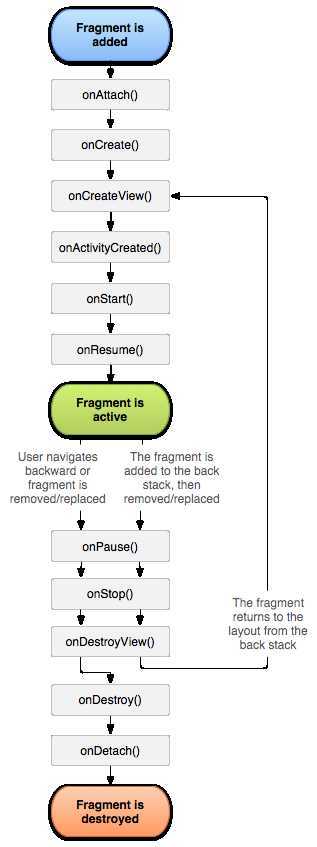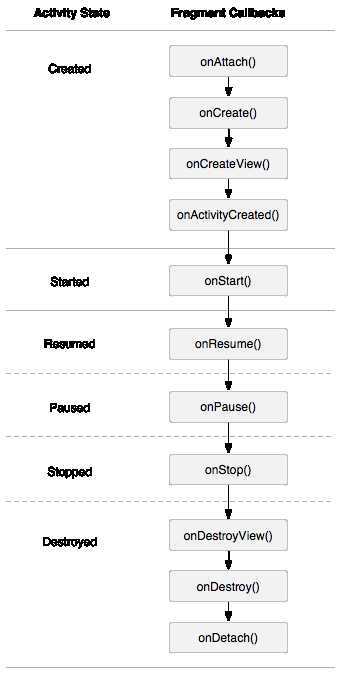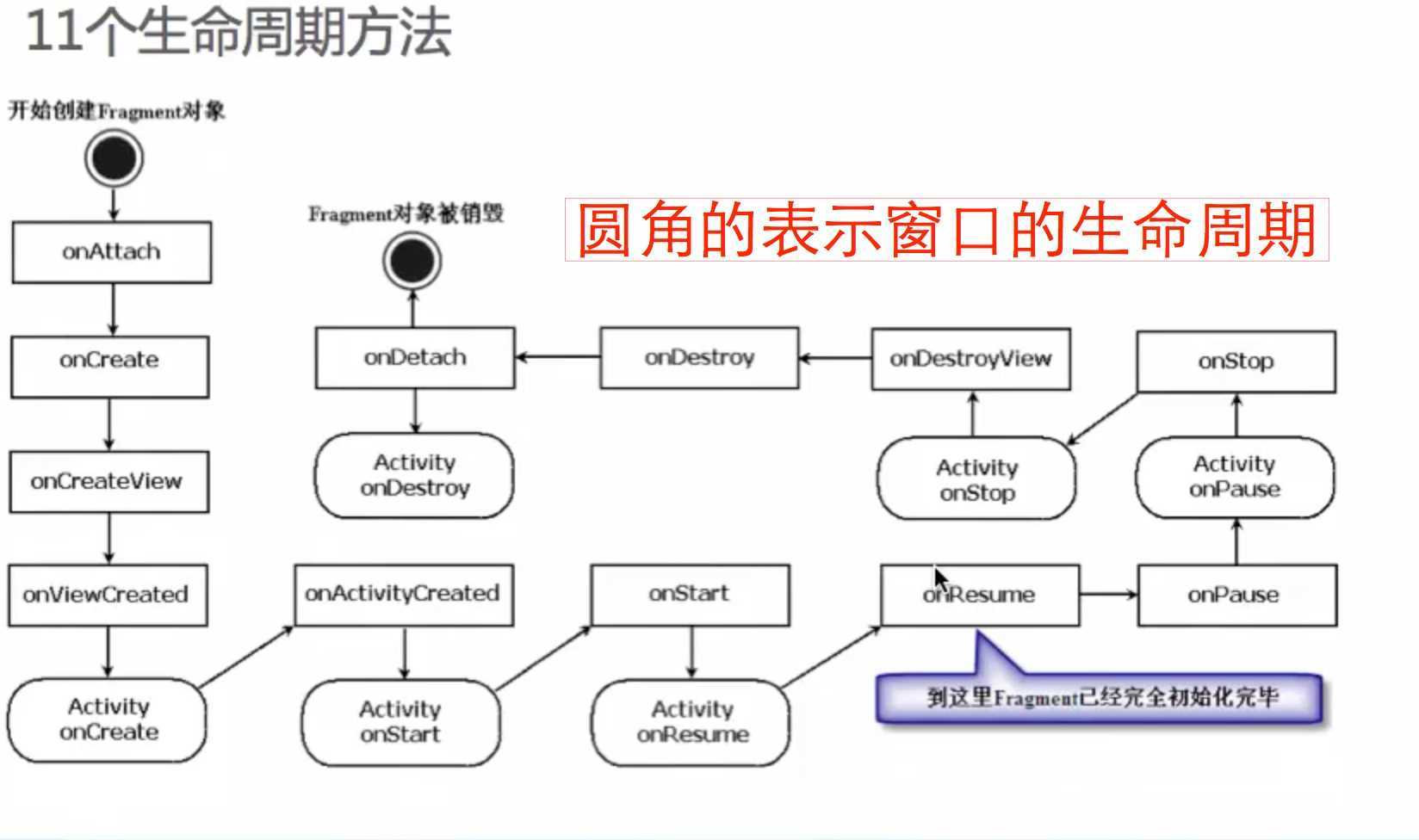标签:android des style blog http color
1. onAttach ------called once the fragment is associated with its activity
2. onCreate-------called to do initial creation of the fragment
3. onCreateView---creates and returns the view hierarchy associated with the fragment
4.onActivityCreated ---tells the fragment that its activity has completed its own {@link Activity#onCreate Activity.onCreaate}
5.onStart----------makes the fragment visible to the user (based on its containing activity being started)
6.onResume-----makes the fragment interacting with the user (based on its containing activity being resumed).
7. onPause----- fragment is no longer interacting with the user either because its activity is being paused or a fragment operation is modifying it in the activity.
8.onStop------fragment is no longer visible to the user either because its activity is being stopped or a fragment operation is modifying it in the activity.
9.onDestroyView ------allows the fragment to clean up resources associated with its View.
10.onDestroy---------called to do final cleanup of the fragment‘s state.
11.onDetach--------called immediately prior to the fragment no longer being associated with its activity

Fragment与Activity生命周期对比图:

1. 当一个fragment被创建的时候,它会经历以下状态.
2. 当这个fragment对用户可见的时候,它会经历以下状态。
3. 当这个fragment进入“后台模式”的时候,它会经历以下状态。
4. 当这个fragment被销毁了(或者持有它的activity被销毁了),它会经历以下状态。
5. 就像activitie一样,在以下的状态中,可以使用Bundle对象保存一个fragment的对象。
6. fragments的大部分状态都和activitie很相似,但fragment有一些新的状态。
一旦activity进入resumed状态(也就是running状态),你就可以自由地添加和删除fragment了。因此,只有当activity在resumed状态时,fragment的生命周期才能独立的运转,其它时候是依赖于activity的生命周期变化的。

[整] Android Fragment 生命周期图,布布扣,bubuko.com
标签:android des style blog http color
原文地址:http://www.cnblogs.com/androidsj/p/3834297.html